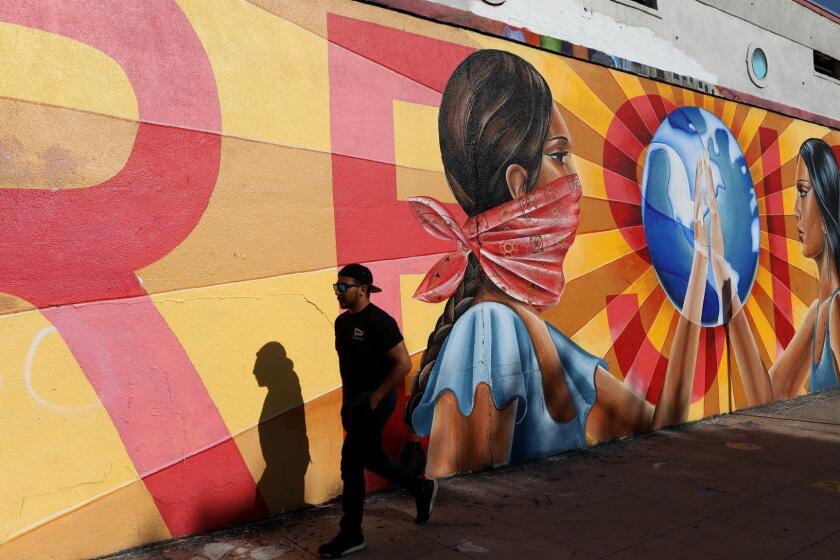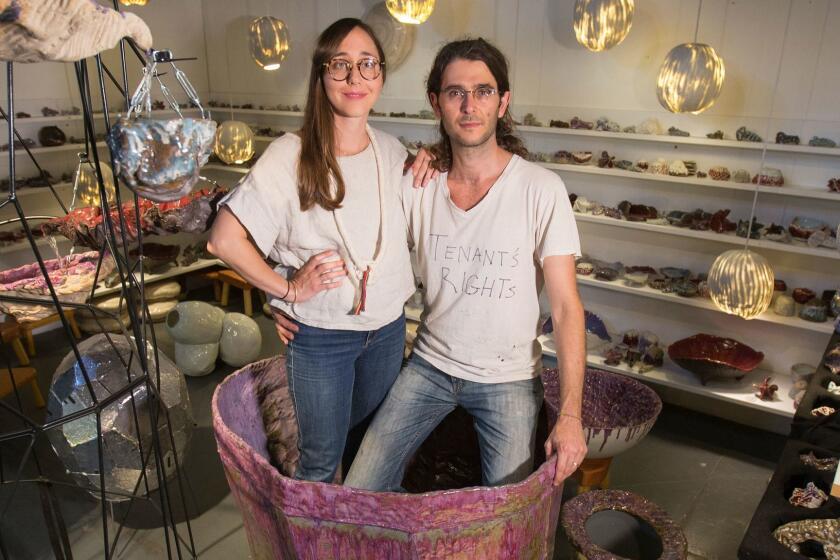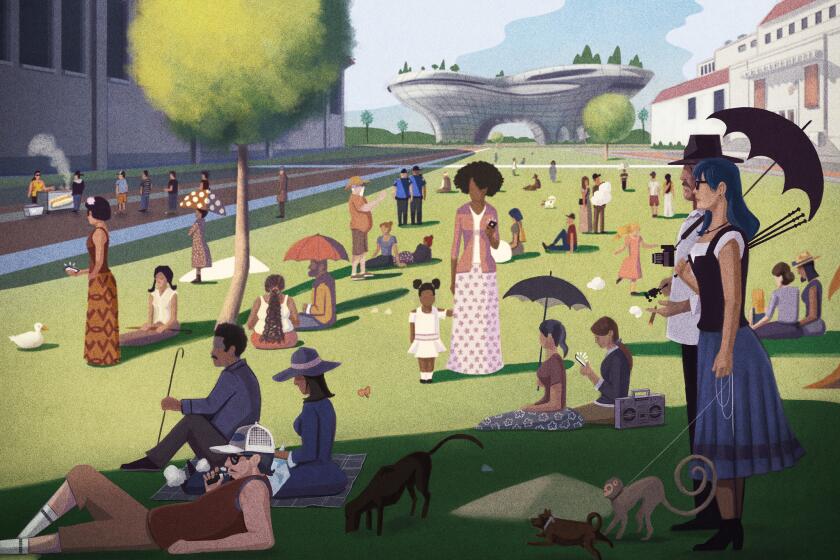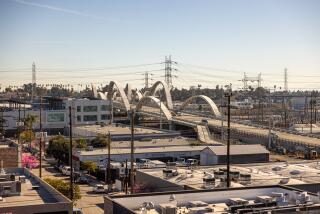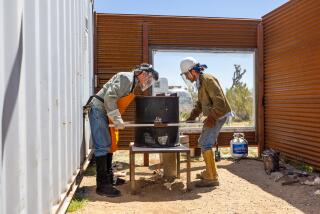Her rent went from $1,426 to $4,493 overnight. It’s doomsday at Santa Fe Art Colony
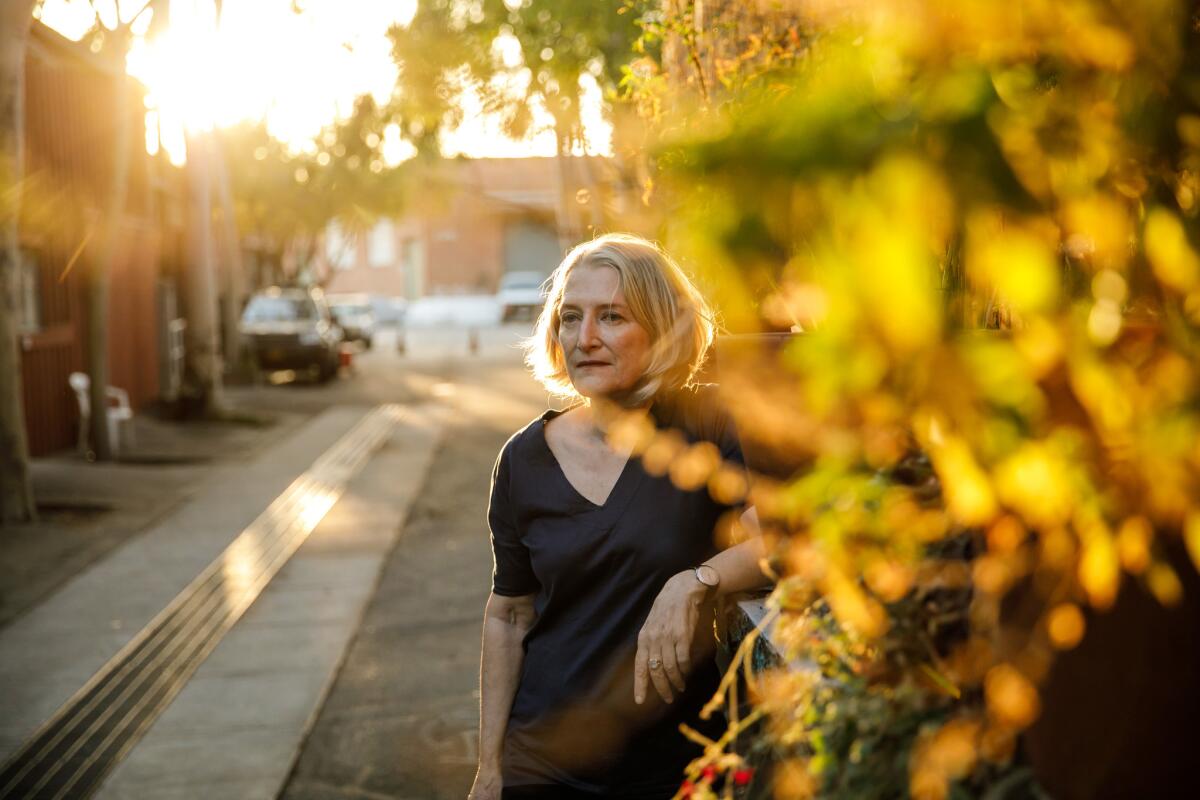
The Santa Fe Art Colony may sit next to a recycling plant and a tow yard in an industrial zone southeast of downtown L.A., but for 30 years the former furniture factory has been heaven for artists — an affordable place for an intergenerational community to live and work.
“We’re a haven for painters, printmakers, artists who aren’t doing commercial shoots for cars or the fashion industry,” said Laurel Paley, chairwoman of the visual and media arts department at Los Angeles City College and one of the colony’s first residents.
All that may change Friday, when rent increases planned by the property’s new owners take effect. Sample rent increases provided to The Times by a tenants’ representative showed that the $680 rent on each of five units had risen to $1,822 to $2,146, depending on the unit. Multiple tenants who had been paying $978 are now looking at rent above $2,000 as well.
The Miami-based development agency Fifteen Group bought the complex of buildings in June 2018 and notified many tenants that their rents will be raised significantly — doubling or tripling for some residents — starting the first of this month. The increase has forced residents to make a difficult decision: Pay the higher rent, which many of them say they can’t afford, or leave the community that they have called home for years — in some cases, decades.
“I have nowhere to go,” said Julie Arnoff, a painter who has called the Art Colony home for 31 years. “I’m just praying it’s gonna work out; I can’t afford it.”
The Santa Fe Art Colony was established in 1986 with public funds through the Community Redevelopment Agency, allowing for the adaptive reuse of factory buildings into artist studios. A 30-year agreement set rent restrictions on 85% of the 57 units. That agreement expired in 2016, but because the previous owners didn’t notify tenants of a rent increase, the city imposed a stay until 2017. After Fifteen Group purchased the property, it raised the rent on the small number of market-rate units. It notified the other residents that rent restrictions would be lifted this month.
Chuck Feesago has lived at Santa Fe Art Colony for a decade.
“I wanted to be here because of the fact that they were practicing artists,” Feesago said. “That lent itself to a certain kind of energy that you don’t get in another place that doesn’t have this concentration.”
On a warm evening in early May, gallerist Robert Zin Stark turned up for a meeting with anti-gentrification activists from the Boyle Heights Alliance Against Artwashing and Displacement (B.H.A.A.A.D.) at a tidy, century-old bungalow just west of the 101 Freeway — the offices of the neighborhood advocacy group Unión de Vecinos.
When the colony was established, units were rented only to people who could prove their artistic bona fides.
“They had a portfolio review to get in here,” Arnoff recalled. “They had to see your art to know you were serious. The managers until recently have always been artists.”
According the several longtime tenants, the new owners have disregarded the conditional use permit limiting tenancy to artists, renting spaces instead to non-artists and eroding the community bonds for which the colony was known. Fifteen Group did not respond to requests for comment.
The colony held annual open studios. Creatives from other industries, especially film, frequently visited to get ideas for projects.
“We serve not just a cultural function, but the arts are huge in the economy,” said Sylvia Tidwell, head of the Santa Fe Art Colony Tenants Assn., who said her rent had been $1,426 but is rising to $4,493 effective Friday. “The fine artists working in the studio at the grassroots level, we generate ideas that inform all the other creative industries.”
Last year artist-residents boycotted a Fifteen Group-organized open studios event, which they saw as an attempt to use their community as a real estate selling point: Come see the kind of cool studios that eventually could be yours.
“That felt really awful,” said Gina Han, who was part of the colony for more than two decades. “Everyone’s coming to see your space, not coming to see your art. They would say, ‘I like this wall, I like this bathroom.’”
On July 2 the tenants association announced that the Los Angeles Conservancy had nominated the Santa Fe Art Colony for the city’s Historic-Cultural Monument designation, granting it interim protection
“The SFAC has been on our radar for some time,” said Adrian Fine, director of advocacy at the conservancy. “We’d certainly been aware of potential changes down the road. Every time there’s a change of ownership, there’s a risk.”
The knock came on the door just as Michael Parker was talking with a group of German urbanism students about the challenges facing artists in Los Angeles.
Located near the border of L.A. and Vernon, the complex with the tapestry of brick facades was originally the C.B. Van Vorst Furniture Manufacturing Co. designed by John Montgomery Cooper in 1916. Cooper has four other projects with historical designations in L.A., including the Roxie Theatre downtown. The nomination is based on its identification as the earliest important building by Cooper as well as its role as the city’s first publicly subsidized art community.
Although the nomination prevents demolition or major changes to the buildings, “they could still do adaptive reuse,” Fine said. “It doesn’t prevent, just allows for a design review process. It’s not frozen in time, but it means there’s a process to maintain its character.”
On a May 13 Instagram post, the L.A.-based Dutton Architects posted pictures of a warehouse that is on the site but isn’t officially one of the colony’s four buildings. The caption said: “Warehouse we are converting to 18 units of artist work-live studios.” When reached by email, John Dutton confirmed “that we are looking at the feasibility of an adaptive reuse of the existing warehouse on the site.”
The month before that post, the tenants association had made an offer to buy the property. The association said California law allows tenants to make a market-rate offer on subsidized housing once it leaves regulatory control; the owners must at least consider the offer, and if they choose not to sell, they’re forbidden from selling the property to anyone else for five years. In July Fifteen Group “refused to negotiate in good faith,” rejecting the tenants’ offer of $16.8 million and asking for $22 million, 47% more than what the company paid for the property last year, the association said.
For many, the plight of Santa Fe Art Colony residents echoes changes in L.A.’s Arts District to the north. Artists transformed that neighborhood before high-end galleries, boutiques, cafes and condos moved in.
For many colony residents, being pushed out would mean something greater than the loss of a home.
“We’re the last spot to be able to hold on to that whole concept,” Feesago said, “to say, ‘we as a group exist,’ and we want to hand it off to whoever follows after us.”
Please support our coverage of California’s art community. Consider a digital membership.
If you live in Los Angeles, perhaps you’ve been to Exposition Park — maybe to catch a Trojans game at the Coliseum, or to see the Space Shuttle Endeavor at the California Science Center, or to let the kids run around the dinosaurs at the Natural History Museum.
More to Read
The biggest entertainment stories
Get our big stories about Hollywood, film, television, music, arts, culture and more right in your inbox as soon as they publish.
You may occasionally receive promotional content from the Los Angeles Times.
